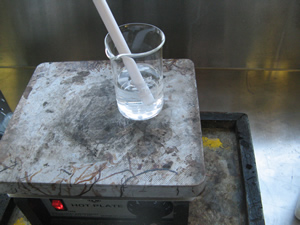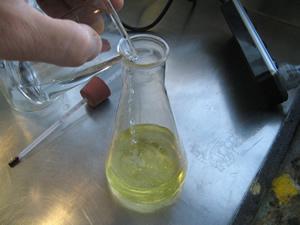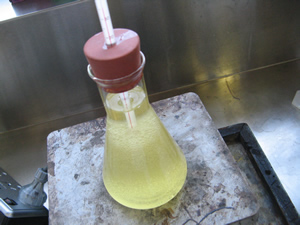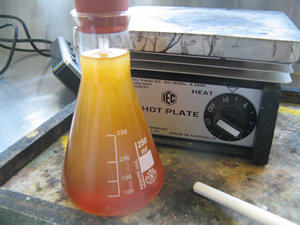Bio-fuels practical.
Biofuels are solids, liquids and gases made from dead biological materials that can be burnt for energy. The burning of these fuels does release CO2 into the atmosphere. However,as they release CO2 that they have previously absorbed from the atmosphere, they are considered to be carbon neutral. Biofuels can be produced from plants or biological waste. Biological waste can be burnt or acted on by bacteria, crops can be specifically grown to produce biofuels such as ethanol. The most common fuel crops produce either ethanol, as in the case of corn and sugar, or biodiesel, which is used primarily for transport. During this practical we will produce biodiesel from vegetable oil.
-250mL of oil;
-hotplate;
-100mL beaker;
-1.4g potassium hydroxide (KOH);
-300mL conical flask;
-thermometer;
-55mL methanol(caution methanol is flammable and toxic);
-stirring rod;
-funnel;
-retort stand;
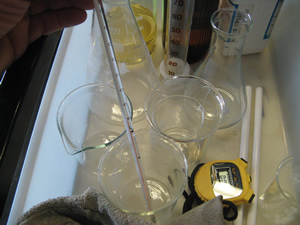
-heatproof gloves;
-separating funnel, as shown on the right;
- rubber stopper .

Step 2 Weigh 1.4 grams of KOH and place it in the beaker with methanol. Place the beaker on the hot plate. Stir until the KOH is dissolved. Keep the temperature to around 50oC.
